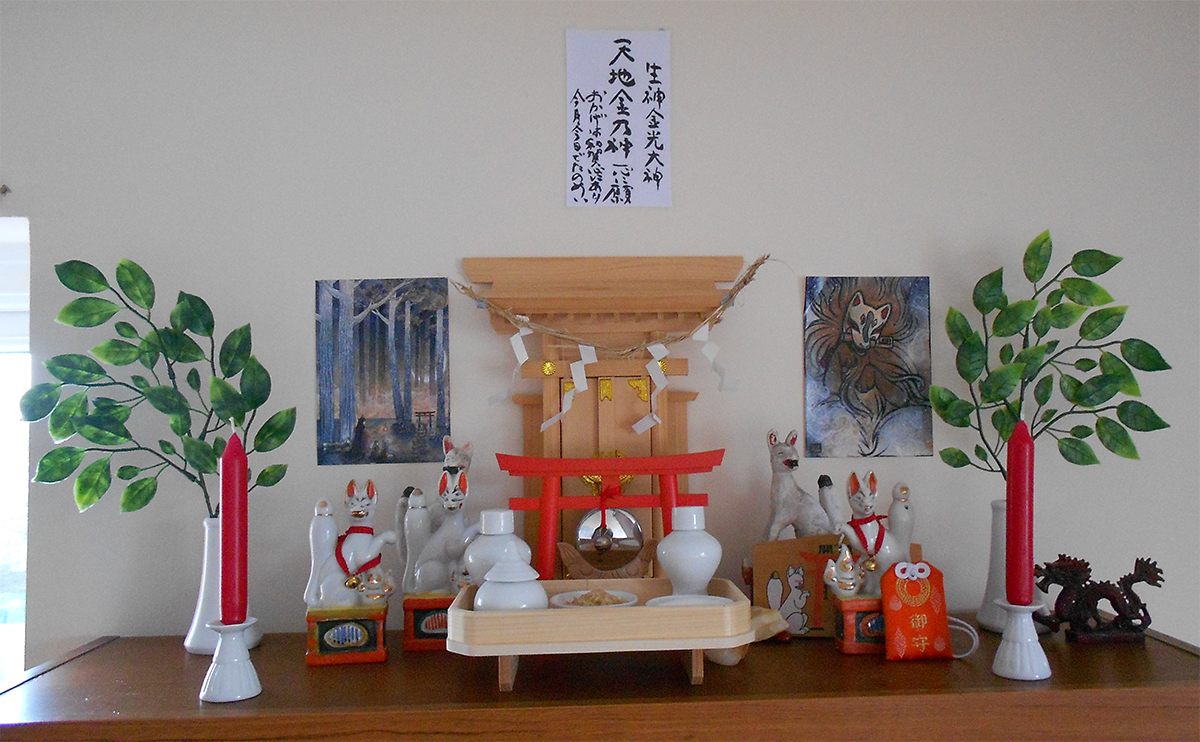In Shintoism, the performance of rituals is a key piece of practice. There are rituals for all means of life, from honoring a loved one that has past to purifying your spirit, Shinto covers many aspects important to its followers. While there are many examples of religions within this religion, there are a few main categories of ceremonies that are practiced regularly: purification rituals, rituals to honor ancestors and kami, rites of passage within a lifetime, and festivals.
 |
A priest performs a purification ritual using a haraigushi on visitors to the shrine
(Source: Brittanica) |
Purification rituals could be considered the most important rituals practiced in Shintoism. Due to purification being the main focus of the religion, these rituals are most often stressed the most. Water, known as a purifier in other religions, is a key piece of purification. Also referred to as
harae, these rituals can be performed both before entering and while visiting the shrine. Before entering a shrine, a visitor will wash their hands and rinse our their mouths with water using a ladle placed outside. while at the shrine, visitors can also be purified by a priest using a branch from a sacred tree or a wooden stick with strips of paper or hemp tied to it, which is also referred to as haraigushi. Another example of a ceremony that can be performed at a shrine is Misogi, a ritual that utilizes the natural flow of water in nature to purify participants in the ritual. During Misogi, participants will first complete deep meditation and pre-purification, such as rinsing the mouth out with water or sake. Then, participants will stand beneath a waterfall, allowing their impurities to be rinsed away. Finally, they will then retire into another session of self meditation and reflection. While Misogi is most often performed under a waterfall, it can also be completed in other natural bodies of water, such as the ocean. To see an example of Misogi performed, click
here.
 |
A kamidana
(Source: Weasyl) |
Rituals can also be used to honor kami. Shrines can be placed in the homes of followers. These household shrines or alters are called kamidana. Usually facing east or south and placed in a quiet part of the home, a shrine replica, vases of leaves and small, white dishes for offerings, such as rice, are placed there. Sitting in front of the alter, there can also be a small mirror surrounded by white pieces of paper. Engraved into the shrine is an amulet, which is meant to absorb evil spirits. When performing these rituals, followers will first wash their hands and mouth with water, then bow twice to the shrine to show gratitude, clap twice to get the attention of the kami and show respect, and then bow once more. Prayers are then completed, and offerings are made to the kami. In addition to this, a family may have a busudan, originating from Buddhism, where offerings can be made to ancestors.
Rites of passage are also an important part of Shinto. After a baby is born, their first important ritual is their first visit to their local shrine, where they are blessed and introduced to the kami. Then, the next ritual comes when they are either five (for boys), three (for girls), or seven (for girls again.) This is called the Shichi-Go-San blessing, when a child dresses in special attire and goes to the shrine for blessings of protection and good health. The coming of age ceremony doesn't occur for children of Shinto until they are twenty, when they participate in Seijin-no-hi, also known as coming of age day. On this day, girls dress in traditional clothing, and boys may as well. It is marked by blessings at shrines, speeches by local officials and parties. Weddings are also seen as rites of passage in a persons life, and usually include ceremonies at shrines where the couple is blessed by a priest and can participate in events such as San San Kudo, where the couple drinks from three cups of sake.
Festivals are a major part of Shinto, and there are many of them that occur all through out Japan. These are often seasonal, and there is at least one if not more occurring each season. These festivals are usually made up of three parts: the welcoming of the kami, a parade with a portable shrine for the kami, and returning the kami back to their home. An example of this would be the welcoming of the New Year, where followers clean their homes and complete their first shrine visit of the year. Other festivals include Niiname, a fall festival held in honor of the rice festival, Girl's Festival, celebrating daughters by placing dolls out on display, and Children's Day, which celebrates the children within Japan.




